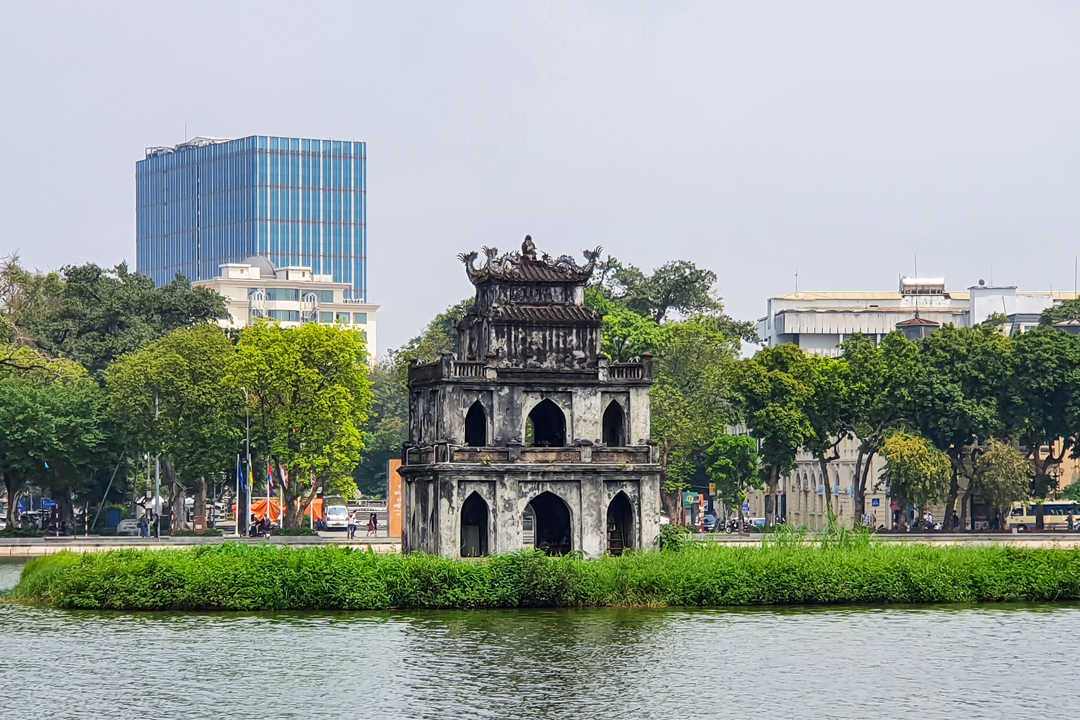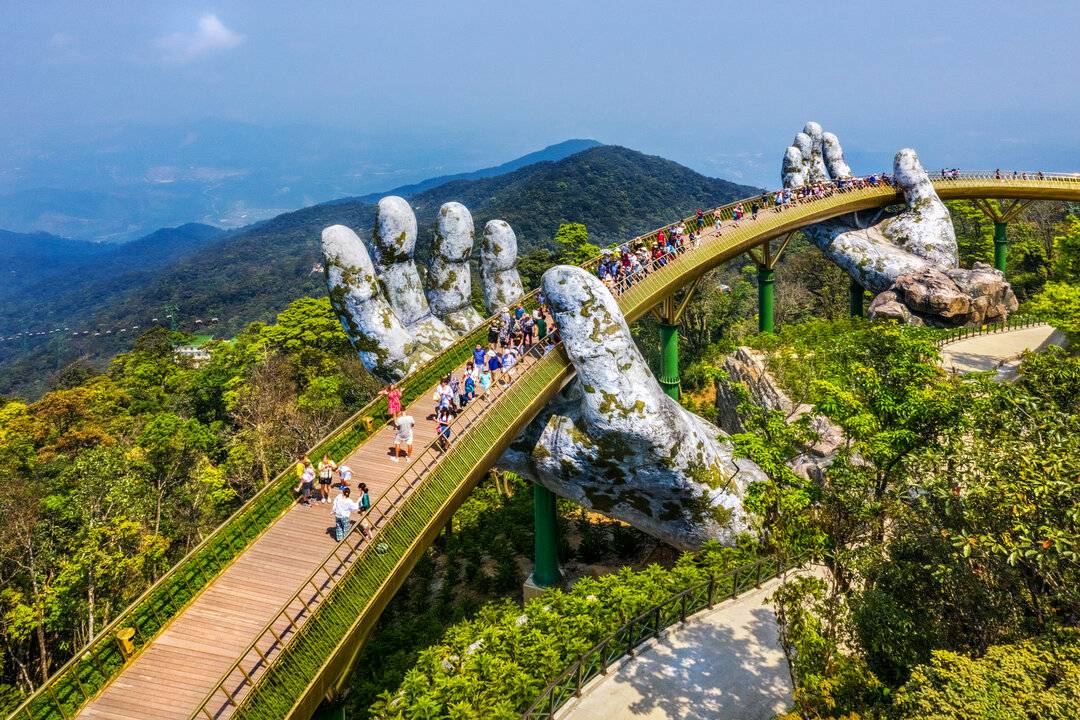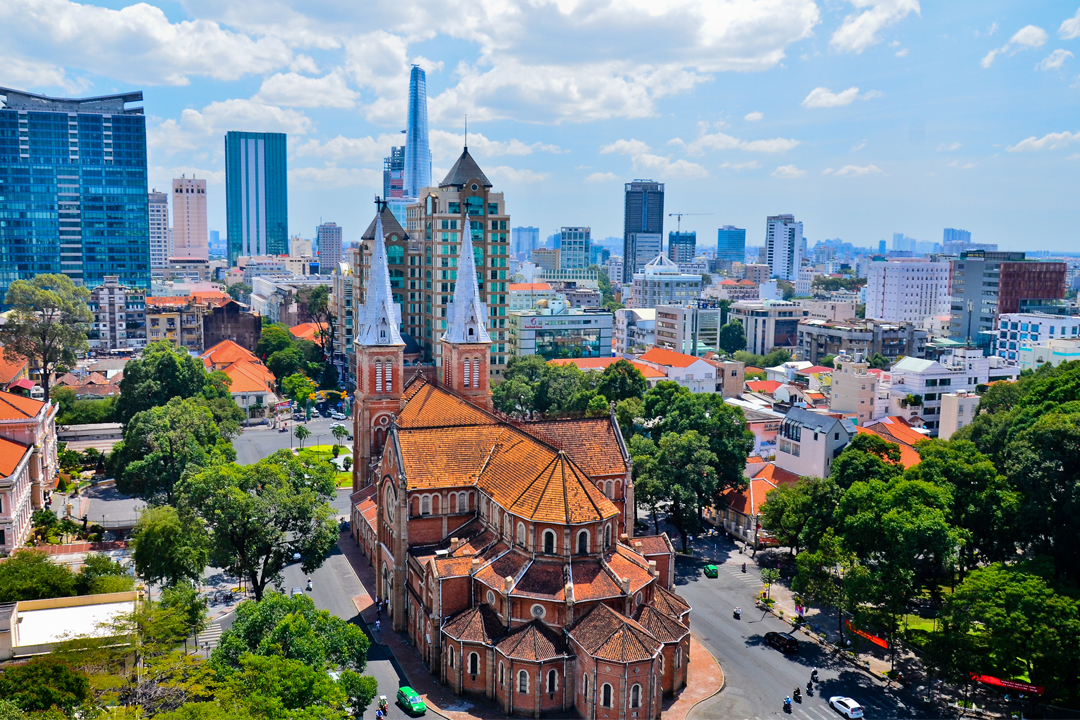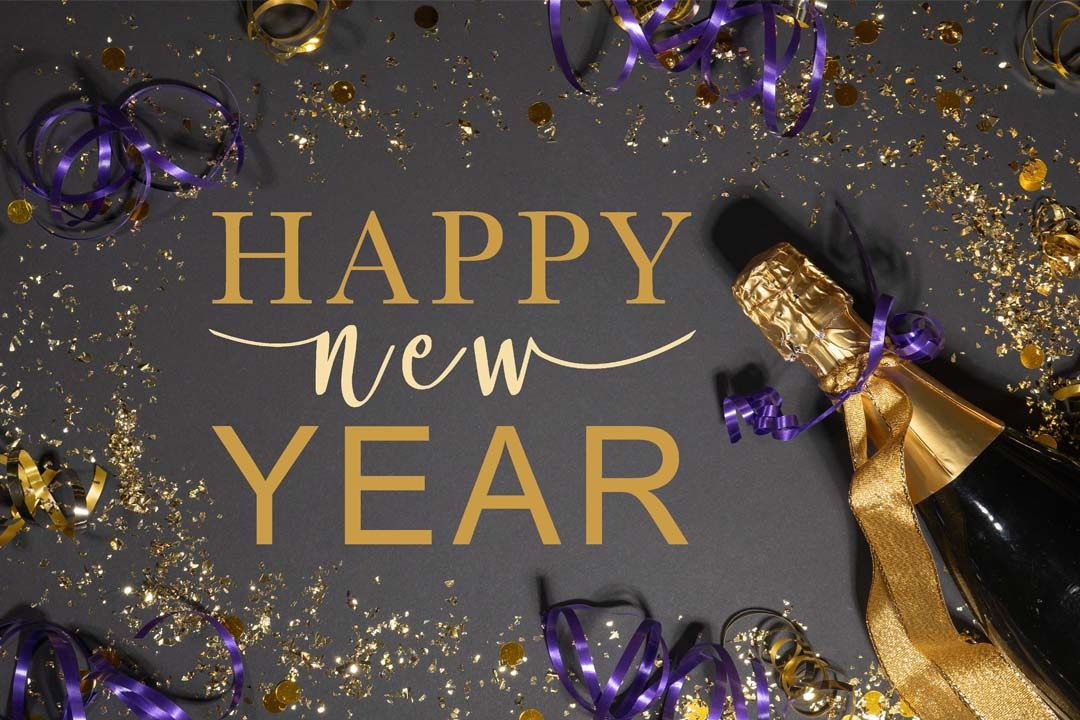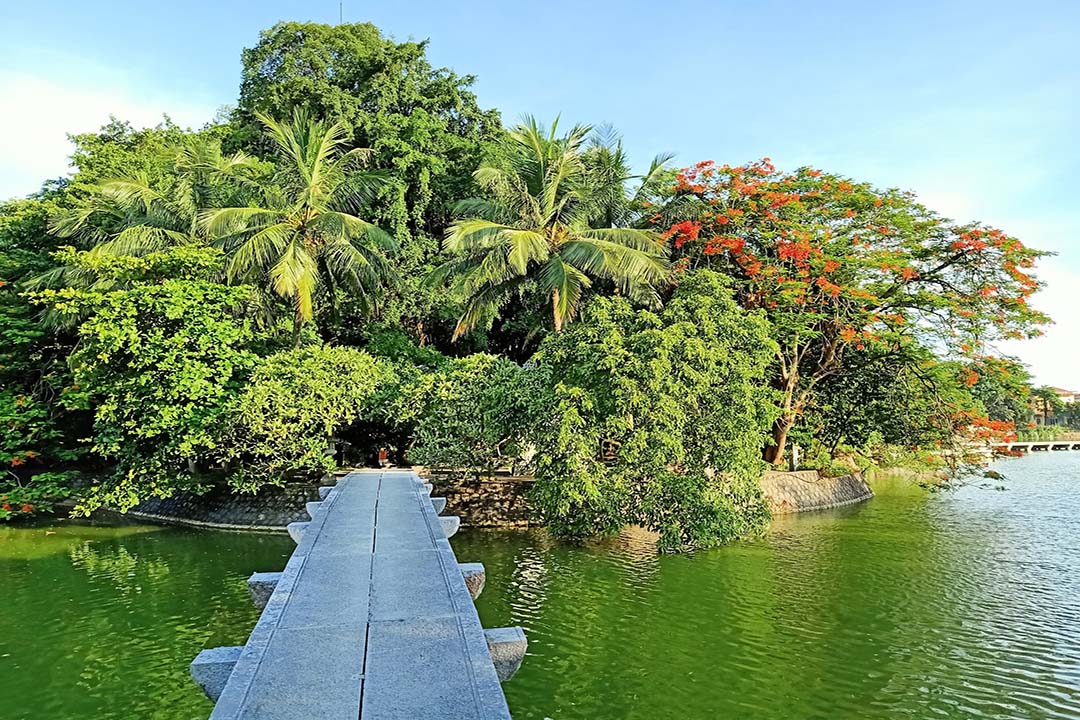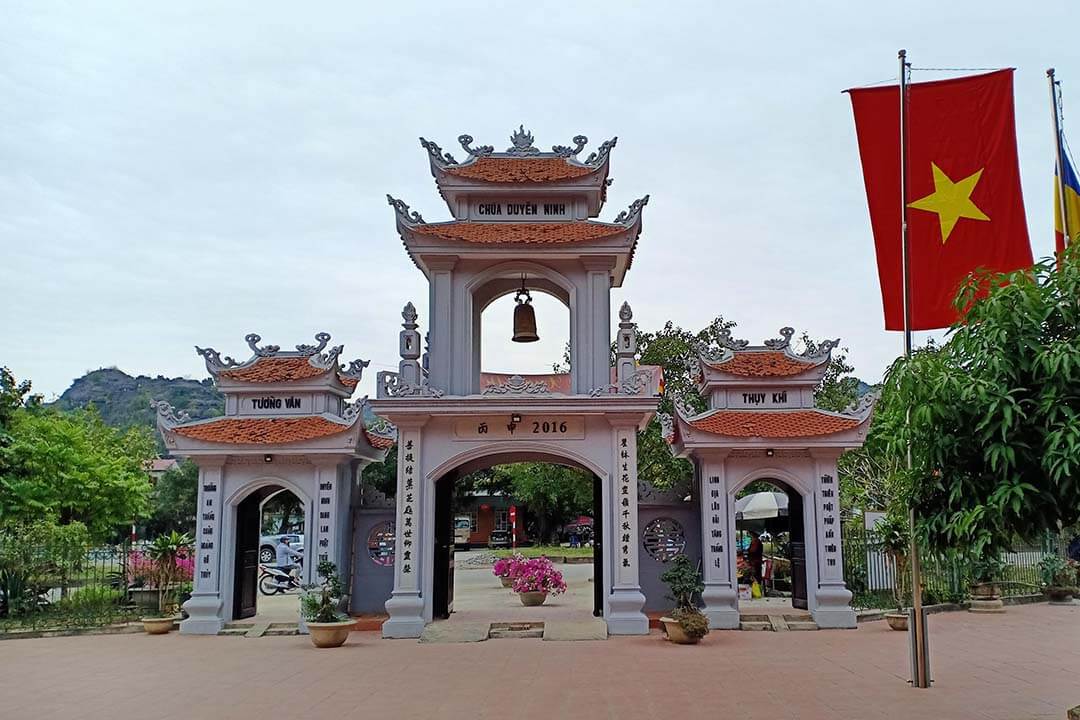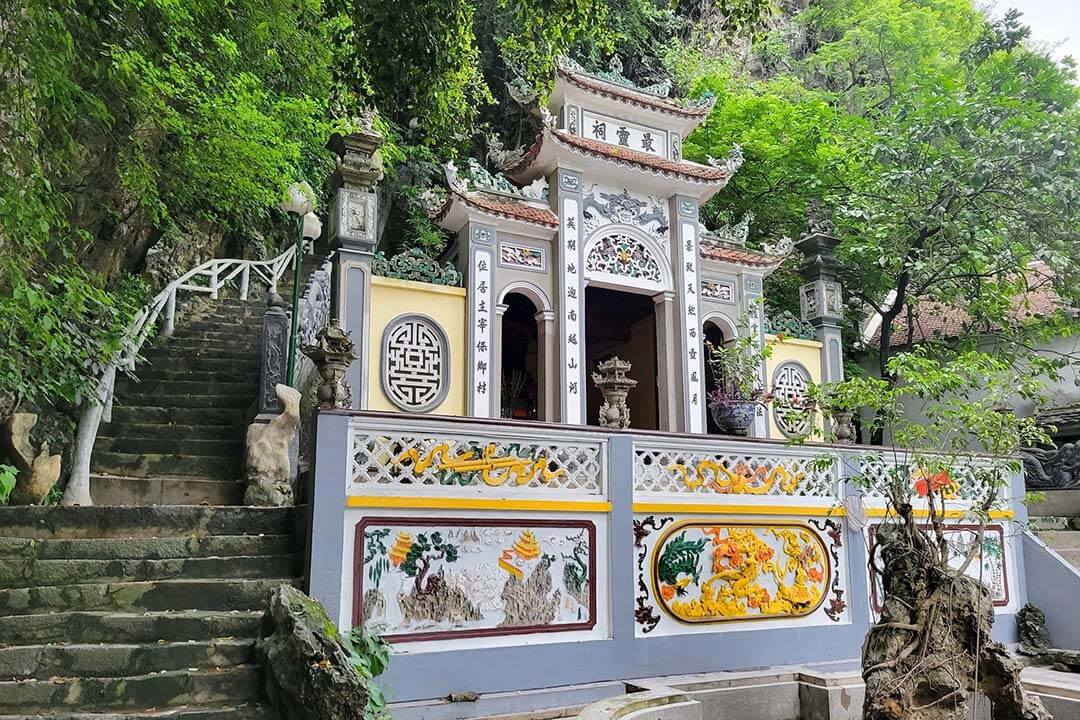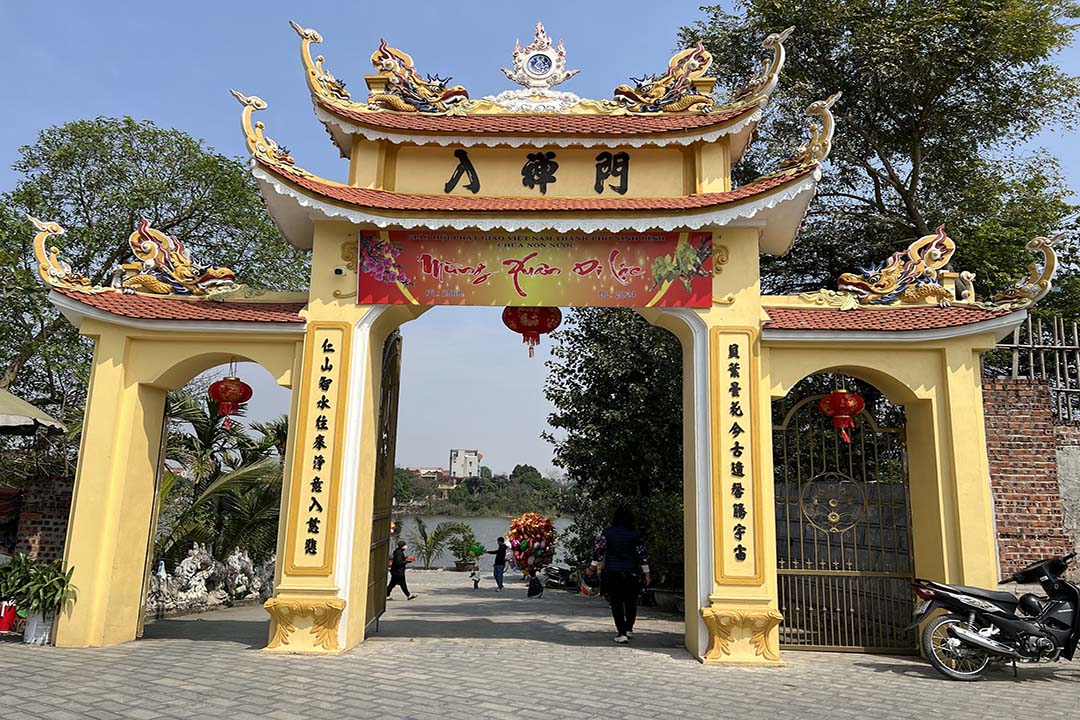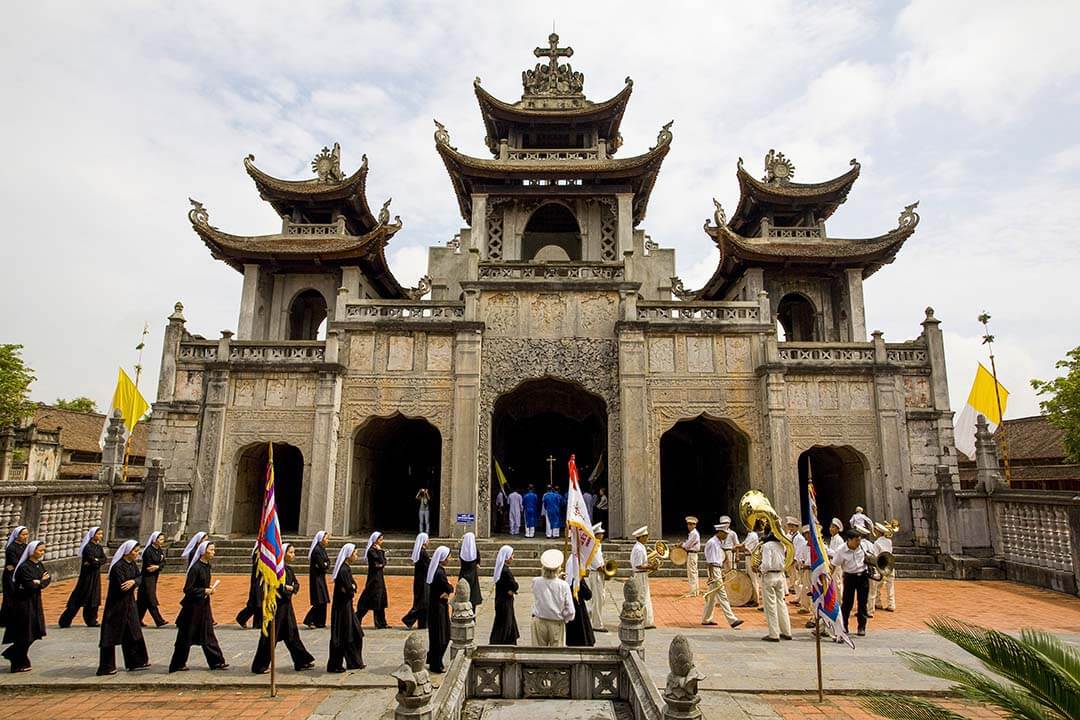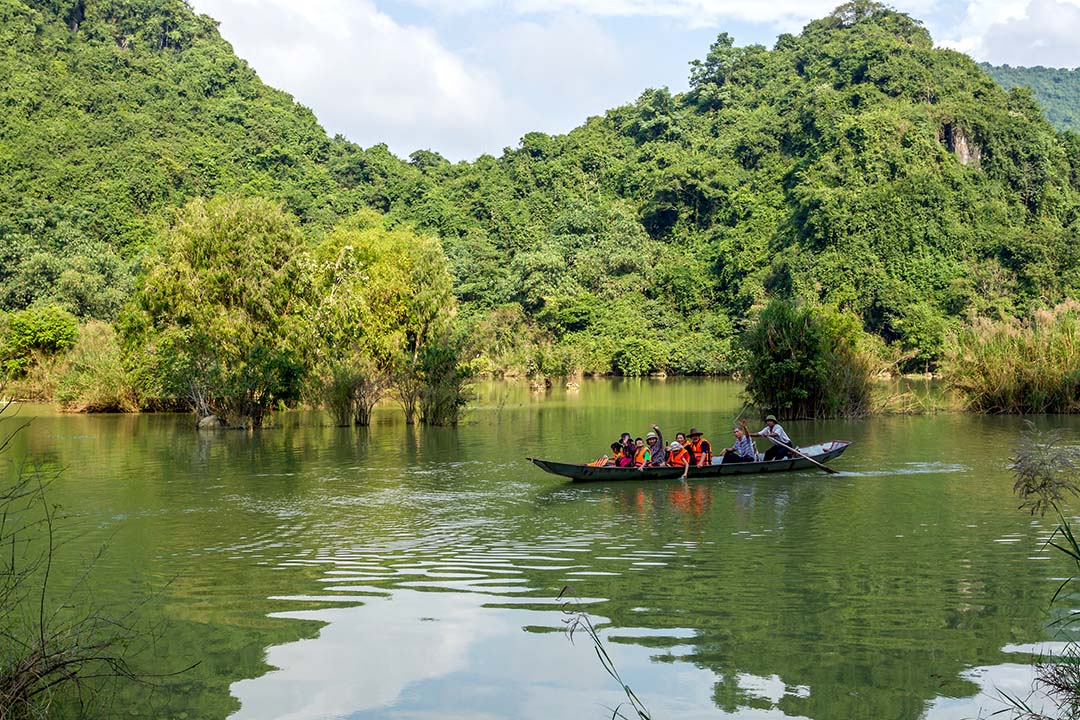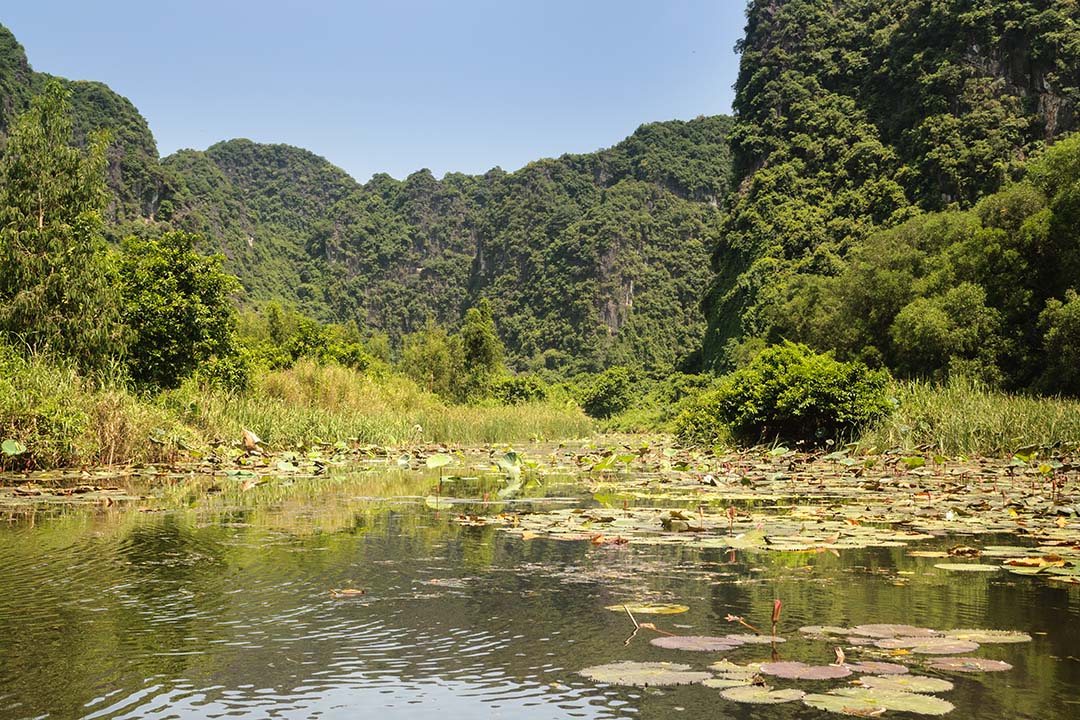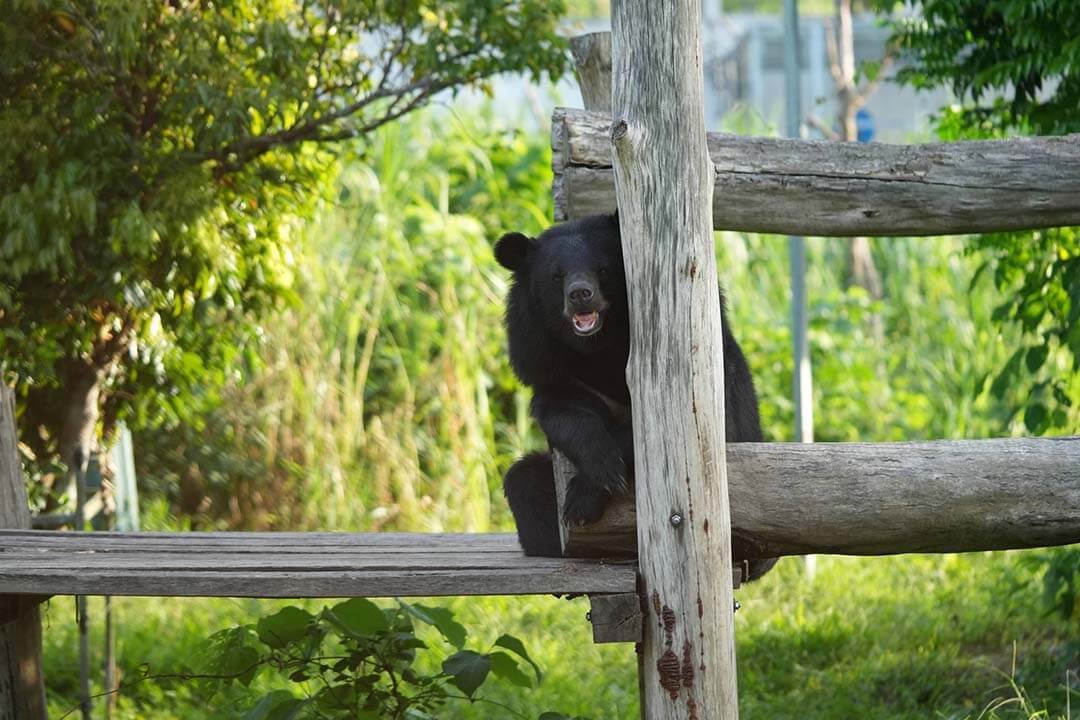Sep - 17 - 2025
Thien Ton Pagoda is one of the most famous Buddhist sites, and it has historical and spiritual significance in Ninh Binh Province. The pagoda is also known as “Hoa Lu Four Town”, attracting many visitors for pilgrimage and sightseeing. Thien Ton Pagoda offers a glimpse into Vietnam’s ancient spiritual traditions and past.
The complex of Thien Ton Pagoda and cave is located on Dung Duong Mountain in Thien Ton Town, Hoa Lu. This complex is situated 7 km north of Ninh Bình City and 5 km west of the ancient capital of Hoa Lu.
Facing south, Thien Ton Pagoda and cave are one of the four structures built to guard the key directions of the Hoa Lu Ancient Capital. The Temple of the God Thien Ton is located in the East, and the Cao Son Temple lies in the West. The Temple of Saint Nguyen is in the North, and the Temple of the God Quy Minh is in the South.
Due to the profound historical and spiritual significance of the Thien Ton Pagoda and cave complex, many questions often arise, such as “Where is Thien Ton Pagoda located?”, “Who is worshipped in Thien Ton Cave?” and “What did King Dinh Bo Linh do when he came here?” All these questions will be answered in detail in GTrip’s article about Thien Ton Pagoda and cave.
History of Thien Ton Pagoda and cave
Thien Ton Cave is dedicated to the god Thien Ton, a revered deity in Hoa Lu’s 10th-century capital. According to legend, Dinh Bo Linh, preparing to confront twelve rebellious warlords, made offerings here, seeking divine support for victory. After becoming emperor, he established Hoa Lu as his capital, where he constructed Tien Te House and Kinh Thien Dai House to host foreign envoys.
The origins of God Thien Ton traced back to his celestial beginnings, according to Bich Dao and Dai Phong village legends. Born as Prince Huyen Nguyen in 625 AD, his exceptional strength and valor marked his youth. After 42 years of rigorous spiritual practice in Dung Duong Mountain, he gained enlightenment and powers from the Jade Emperor, including the “Tam Thai That Tinh” sword.
In 938 AD, Chancellor Cao Do Duong erected a temple honoring him at Thien Ton Cave’s entrance, depicting him holding a sword above a turtle and snake. Emperor Dinh Tien Hoang, later aided by the god’s spiritual protectors, conferred the title “An Quoc Emperor” upon him.
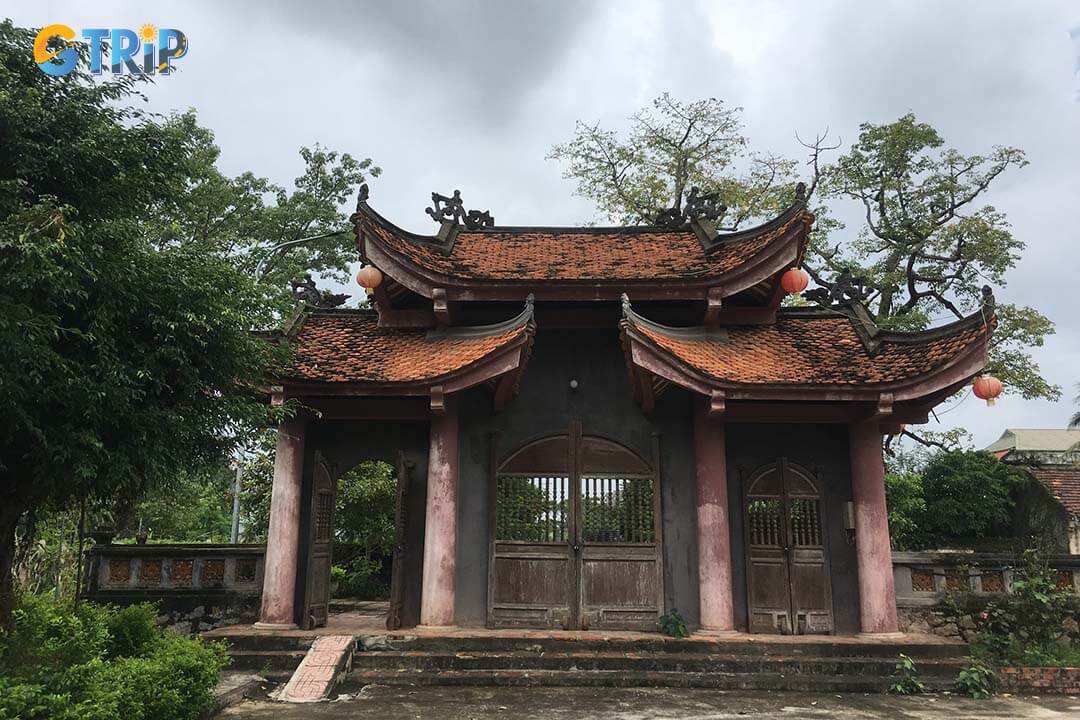
Thien Ton Pagoda
In Ninh Binh today, places with vestiges and miracles related to God Thien Ton include:
- Bich Dao Village: Bich Dao Temple on Bac Son Street is a sacred site for local worshippers. Nearby, Thanh Ca Temple, located in the Canh Dieu mountain area, is dedicated to honoring the god Thien Ton.
- Dai Phong Village: This area, now part of Nam Binh Ward, hosts Tram Pagoda with detailed stone carvings. Nearby, the Yen Phong Temple also stands as an important cultural relic.
- Da Gia Village: The village features Hang Tong Communal House, a significant religious site in Thien Ton Town. Thien Ton Cave is also here, renowned for its connection to local legends.
- Yen Cu Village: South of Ninh Binh City, Thanh Ca Temple remains a spiritual center. It serves as a historical place of worship for the god Thien Ton.
- Phu Gia Village: Phong Phu Pagoda contains an ancient stele narrating the stories of Thien Ton. Phong Phu Communal House, nearby, continues to honor this deity in communal rituals.
- Luc Gia Village: Located near Thien Ton Town, Thuong Luc Gia Communal House is a site of local worship. It is known for its close association with the god Thien Ton.
The girl riding the bicycle in Ninh Binh
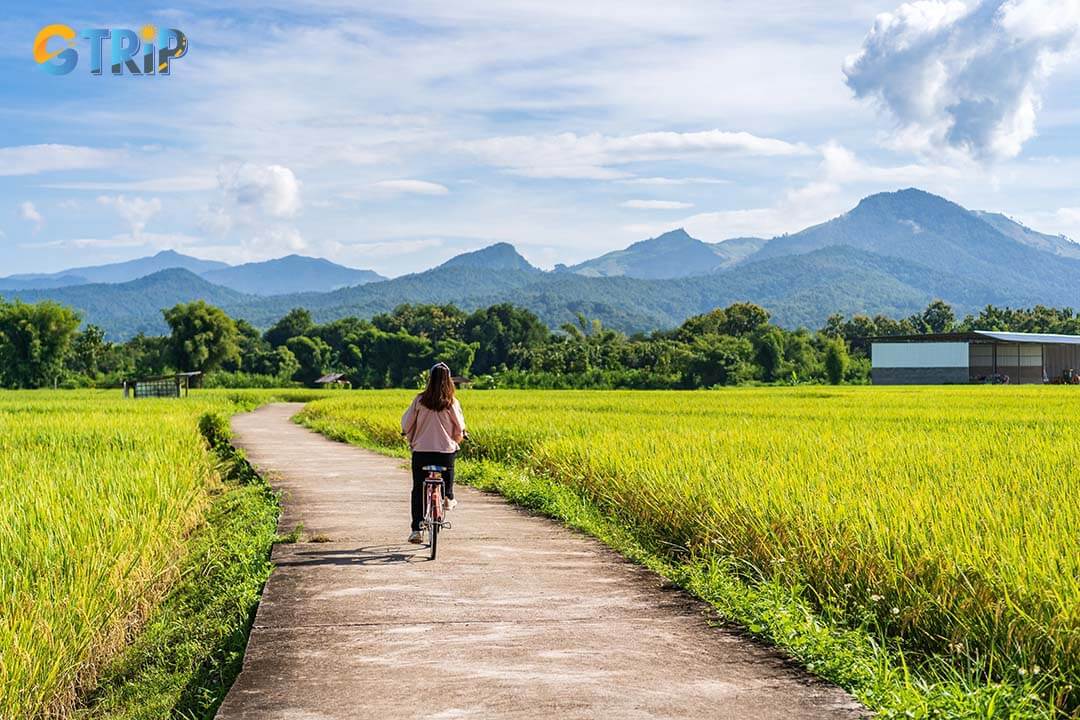
The girl riding the bicycle in Ninh Binh
Architectural and aesthetic elements of complex
The Thien Ton Pagoda complex is characterized by traditional Vietnamese architectural elements, such as curved roofs, dragon motifs, and intricate lotus carvings. These details reflect beauty and embody the nation’s cultural values. The harmonious design creates a tranquil space, ideal for meditation and reflection.
The pagoda’s layout adheres to Vietnamese Buddhist architectural principles, promoting a sense of peace and harmony. These elements foster a quiet environment that encourages spiritual reflection and honors Buddhist ideals.
Inside the pagoda, sacred statues and artifacts enhance its religious significance. These relics depict divine figures, highlighting the pagoda’s role as a sacred place of worship. Visitors often find inspiration and tranquility by connecting with the rich spiritual history of these artifacts.
Symbolic motifs are skillfully integrated throughout the structure. Dragons symbolize protection, while lotus carvings represent purity. This blend of aesthetic beauty and spiritual depth connects Vietnamese artistry with sacred meaning. Each element contributes to a larger narrative that honors the community’s traditions and beliefs.
Travel guide when visiting Thien Ton Pagoda and cave
Thien Ton Pagoda is open daily, allowing visitors to experience its beauty and spirituality. There is no admission fee, making it accessible for everyone. Offerings can be made at designated areas within the temple complex to honor the deity. You should check local holidays, as they may affect opening hours and accessibility.
The festival at Thien Ton Pagoda and cave typically takes place over three days, from the 6th to the 8th of the third lunar month. The festival features various engaging activities such as incense offerings, traditional ceremonies, and festive events. The lively part of the festival includes dragon dances, traditional martial arts performances, sword fighting, and cultural exchanges, attracting many locals and tourists to join in the celebrations.
When visiting this pagoda, visitors are encouraged to dress modestly and maintain respectful conduct throughout the site. Photography may be restricted in certain areas, so asking before taking pictures is advisable. Following these guidelines ensures a respectful atmosphere for both visitors and worshippers. Additionally, it’s considerate to keep noise levels down to preserve the serene environment.
The pagoda features essential facilities such as restrooms and parking areas for visitors’s convenience. There are rest areas to relax and take in the surroundings. Accessibility options are available for visitors with mobility issues, ensuring a comfortable visit for all. The staff is also available to assist anyone needing special accommodations.
Local transportation options include buses and taxis, which are readily available for easy access. It is advisable to plan your visit ahead, considering peak hours and traffic. Ensuring comfortable travel arrangements will enhance your overall experience at the pagoda. For a more scenic experience, consider walking from nearby attractions to enjoy the local landscape.
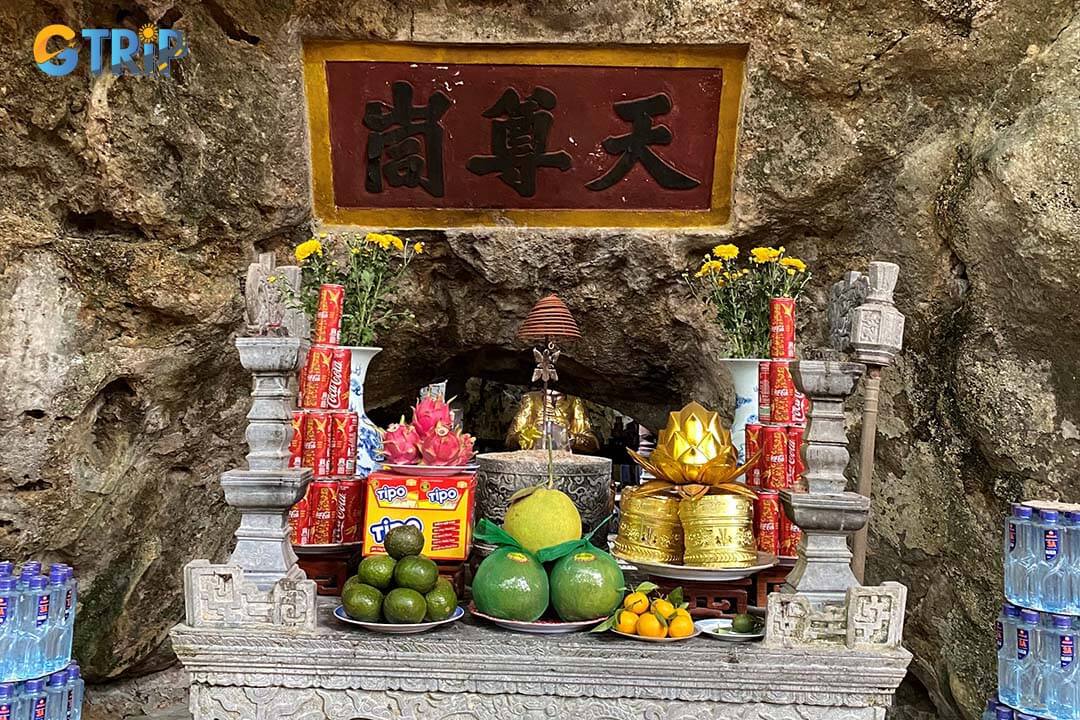
Altar of God Thien Ton
Photography and scenic highlights
To capture the best photographs, visit during the early morning for serene lighting and calm surroundings. The late afternoon provides vibrant colors, enhancing the beauty of the landscape. Consider bringing a tripod to stabilize your camera for long-exposure shots.
A prime spot for photography is the temple courtyard, where visitors can overlook nearby hills and lush greenery. This angle beautifully showcases the pagoda against its stunning natural backdrop. Capture the pagoda framed by trees for a unique perspective.
Respectful photography practices are essential in sacred spaces. Visitors should be mindful not to disturb worshippers while capturing their moments. Always ask for permission before photographing individuals, especially during rituals.
Visitors are encouraged to share their photos and experiences on social media. Use dedicated hashtags to connect with other travelers and enhance the sense of community. Engaging with fellow visitors can inspire others to explore this beautiful destination.
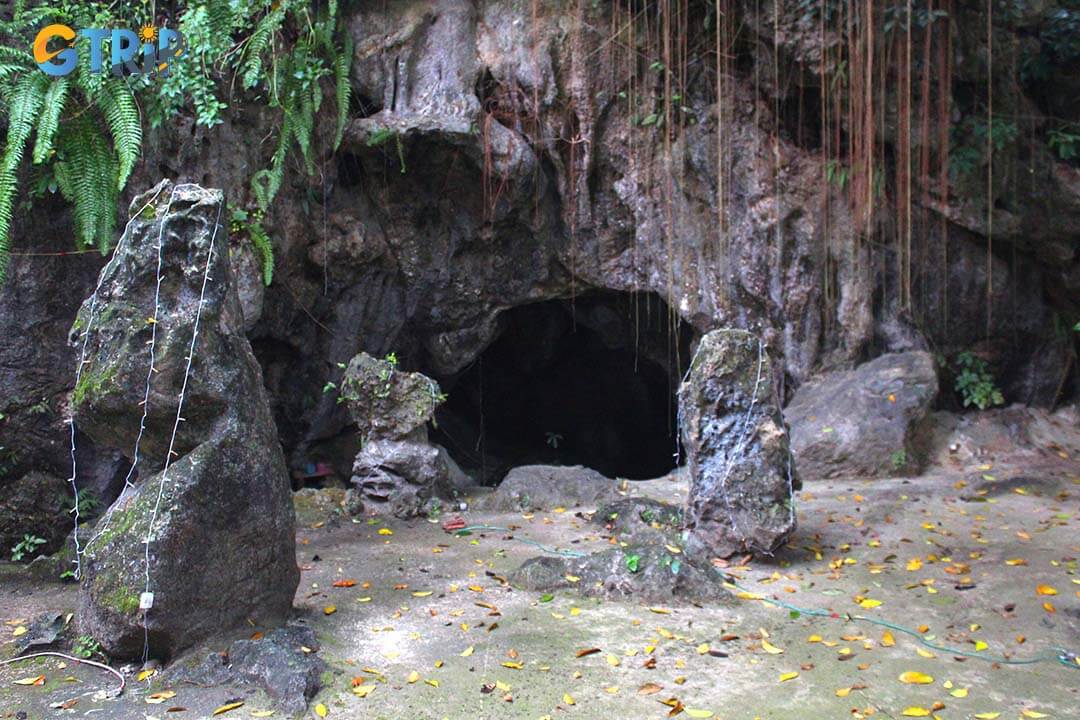
Other cave near Thien Ton Cave
Suggested itineraries and nearby attractions
To enhance your experience visiting Thien Ton Pagoda, consider including it in a Ninh Binh travel itinerary. This itinerary can feature nearby famous attractions such as the ancient capital Hoa Lu, Am Tien Cave, Trang An Scenic Landscape Complex, and Mua Cave. These sites offer stunning views of the landscape and rich cultural experiences, making them ideal companions for a day of exploration. Furthermore, visiting these locations together helps you better understand Ninh Binh’s natural and historical significance.
For a cultural day trip, start at Thien Ton Pagoda in the morning, then travel to Trang An Scenic Landscape Complex around noon and stop for lunch there. The afternoon is perfect for hiking up the 500-stone steps to Mua Cave. Ninh Binh has many famous specialties, including grilled mountain goat, steamed mountain snails with lemongrass and chili, and burnt rice.
For a spiritually focused tour, spend more time at Thien Ton Pagoda and explore Bai Dinh Pagoda. Thien Ton Pagoda is about 20 kilometers from Bai Dinh Pagoda and takes about 30 minutes to reach. Visiting these two historically and spiritually significant temples allows you to engage more deeply with local spiritual practices. You can also enjoy local cuisine in the area, enriching your cultural experience.
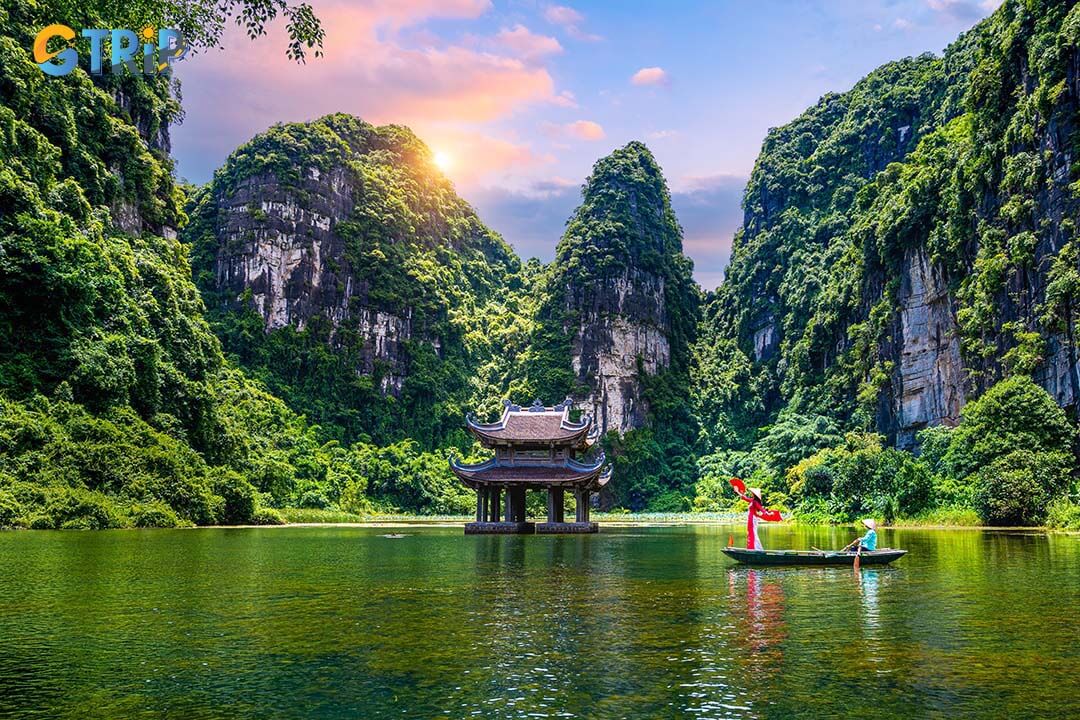
Asian women wearing red traditional Vietnamese cultural clothing on a boat floating in the river flowing through the mountains at Trang An
Experiencing Thien Ton Pagoda and cave complex
Thien Ton Pagoda embodies cultural, historical, and spiritual values central to Vietnamese heritage. Exploring this site offers a profound understanding of the country’s rich traditions and beliefs. The pagoda is a testament to Vietnamese Buddhism’s enduring spirit and its connection to the community.
Visitors can expect a transformative experience, rich in insights about spirituality and cultural heritage. This journey promises lasting memories and encourages a deeper connection with Vietnam’s history and culture. Engaging with the local practices will further enhance the visit and foster appreciation for the area.

